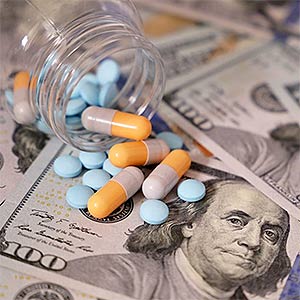 Recently, the state legislature passed the ground-breaking Prescription Drug Pricing Transparency Act, mandating that drug companies must now notify Minnesota consumers when they institute significant price hikes for certain prescription medications. This bipartisan legislation didn’t happen overnight. It was the culmination of more than a year of negotiations between legislators and various advocacy groups, and I’m proud so say that Minnesota’s nonprofit health plans played a significant role in making it happen.
Recently, the state legislature passed the ground-breaking Prescription Drug Pricing Transparency Act, mandating that drug companies must now notify Minnesota consumers when they institute significant price hikes for certain prescription medications. This bipartisan legislation didn’t happen overnight. It was the culmination of more than a year of negotiations between legislators and various advocacy groups, and I’m proud so say that Minnesota’s nonprofit health plans played a significant role in making it happen.
How does the new legislation benefit me as a consumer?
The new law creates “news you can use” when it comes to your medications. You’ll have a window into when and why your prescription meds are going up in price, and you’ll be armed with better information to potentially help you save money by finding more affordable alternatives. As the saying goes, “sunlight is the best disinfectant,” so the longer-term hope is that greater transparency in pricing will lead to lower drug prices overall.
Specifically, if you’re taking a medication that already costs $100 or more for a 30-day supply, the new law requires the makers of that drug to publicly disclose any sharp increases in price. For brand-name drugs, the requirement kicks in when the price jumps at least 10% over 12 months, or 16% over 24 months. Changes for generic drugs must be reported when prices go up by 50% or more.
When the requirements kick in next year, drug manufacturers must disclose the following information to regulators, which you will then be able to see online via the Minnesota Department of Public Health’s website:
- the name of the drug and the net price increase
- the list of factors leading to the price increase
- the names of any generic versions of the drug that are available
- the introductory price approved by the F.D.A. and year-over-year increases
- costs incurred by the manufacturer associated with the prescription drug, including manufacturing, marketing and distribution
- net profit and sales revenue on the drug for the previous 12 months
- the total amount of financial assistance the manufacturer has offered through patient assistance programs
- any agreements between the manufacturer and another entity about delaying the production of generic alternative
When will I be able to take advantage of this new system, and what are the consequences if the drug companies don’t comply?
The new requirements take effect on Oct. 1, 2021. At that point, manufacturers will have 60 days after they increase prices or introduce new drugs to submit the information above to the state health commissioner. If they fail to do this, or if they provide inaccurate or incomplete information, they’ll face fines of up to $10,000 a day. Those funds would go into the state’s Health Care Access Fund, which helps pay for MinnesotaCare and other programs that increase access to health care for lower-income Minnesotans.
Why is this issue so important to Minnesota’s nonprofit health plans?
It’s all about affordability and accountability. Health insurance premiums reflect the overall cost of care, and prescription drugs are a major driver of health care costs. In fact, most people don’t realize that prescription meds account for nearly 25% of all health care expenses — which is more than in-patient hospitalization costs. Under our current system, drug companies can raise prices with little exposure or justification. The latest round of price increases happened in January of this year – prices increased on more than 200 prescription drugs. The steep increases in drug prices not only harm patients but taxpayers as well who help to pay for public programs, such as Medicare and Medicaid. The new law empowers consumers by making drug companies more accountable to them, and it empowers policymakers by providing better data to help drive better policy.
Bottom line: Creating more transparency of drug prices is an important first step toward raising awareness of the role of drug prices in health care. Minnesota’s nonprofit health plans believe that greater transparency in drug pricing will help drive down the cost of prescription drugs and make health care more affordable for everyone.